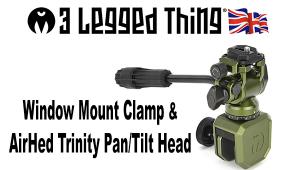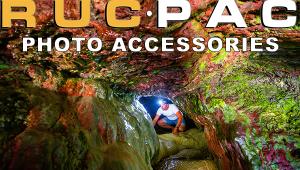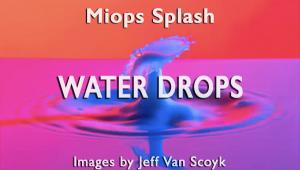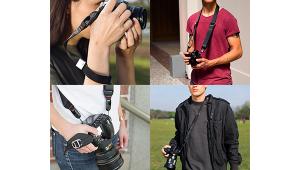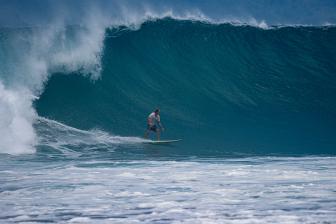Two “Must-Have” Filters: Lens Accessories For Digital Photographers
When I say filter, your first thought may be a Photoshop plug-in. That’s natural, especially if your first good camera was digital. But folks who cut their photographic teeth shooting 35mm film know all about the light-bending qualities of glass screw-in filters. Physical filters were once the best (and sometimes only) way to get certain types of creative shots. Although still as effective as ever, they’ve fallen from favor for several reasons.


All Photos © Jon Sienkiewicz
It can’t be denied that most glass filter effects can be recreated using editing tools like Photoshop with its immense library of available plug-ins and other “stand-alone” programs that can give you everything from soft focus to multiple starbursts. It’s generally thought that it’s better to start with a straight shot and then manipulate it to impersonate the filter of your choice—that way you can always go back and be creative all over again. Some photographers have become so good at emulating filter effects that their creations are far superior to anything that glass-over-glass could produce. Even beginners can get great creative effects thanks to the Art Filters that are built into just about every newer D-SLR.
But there is a pair of filters that not even Photoshop can make obsolete. These filters materially change the nature and amount of detail that the camera captures by reducing light intensity and/or random light waves. They are the Neutral Density (ND) filter and the polarizer.


To be strictly correct, both ND filters and polarizers come in different flavors, so one could make a case that you should really own a set of NDs and a couple of variations on the polarizer theme. Some may even lobby to include the ignoble UV filter in this category (see the sidebar “About The UV Filter”). For the purpose of this article, we’ll lump all NDs into one bucket, and do likewise with the polarizers. The UV filters we’ll simply lump.
Polarizing filters are widely known to darken blue skies and remove reflections from shiny surfaces, including water, but truth told, they remove data-blocking glare from any reflective surface, with the possible exception of “conducting” materials like metal. That means when you use a polarizer, the CCD or CMOS imager in your camera receives more image data. Areas that otherwise appear as blown-out glare (clipped highlights) without a filter become richly saturated and full of color.

Polarizers are light vampires, sucking up as much as two full f/stops in some instances; otherwise, we’d all be using them all of the time. Off the record, I predict that one of the next enhancements we’ll see in digital signal processing is built-in polarization circuits that efficiently ignore nonparallel signals and thereby enrich colors and reduce glare.
The Neutral Density filter is aptly named. It does nothing but reduce the amount of light that reaches the sensor. It adds no color, no distortion, no anything. Photographers spend so much of their time trying to increase the amount of useful ambient light that at first it seems counterintuitive to contrive a contraption that can reduce it. But think about this: you’re at the beach, under the blazing sun and surrounded by reflective sand and ocean, and you want to shoot at f/2.8. Or a snow scene, white hot and bright, and you want to limit depth of field and shoot at f/4 with a long lens even though the correct exposure calls for f/16. Or, you want to create a “motion flow” effect in a stream or waterfall and there’s just too much light to get as slow a shutter speed as that effect requires. Twist on an ND and blaze away.


A derivative of the ND filter, the Graduated ND, is dark at one end and clear at the other, with a smooth transition from dark to light. It will effectively darken a bright sky while leaving the foreground in its original state. Square Graduated ND filters, like the Cokin Creative System or Singh-Ray, work best because you can adjust the transition relative to the horizon with changing composition or camera angle.
In Case Your Filter Gets Stuck…
Be careful not to overtighten a screw-in filter when attaching. If a filter does become stuck, gently (and we mean gently) press the heel of a soft-soled shoe parallel (flat) against the entire knurled outer edge of the filter and carefully turn. For thicker filters and polarizers (which are designed to rotate), slip a wide rubber band around the circumference of the filter and turn.
About The UV Filter
You probably own some variation of a UV filter (a 1A Skylight filter, perhaps) because someone at a camera shop recommended that you buy one to protect your lens. There’s an ounce of truth in that story, although you may be better off protecting your lens with a lens shade.
UV is short for ultraviolet. The wavelength of UV radiation is less than 400nm (nanometer, or one billionth of a meter). It’s invisible to the human eye, but theoretically it can alter the rendition of certain images. The question is this: can you see a difference with and without a UV filter?
Perhaps the bigger question is: do you feel that your lens is safer when protected by a UV or 1A filter? If so, rest assured that while you might not see any improvement in your photos, you’re really not hurting anything either.
You can read Jon Sienkiewicz’s blog at: www.shutterbug.com.



